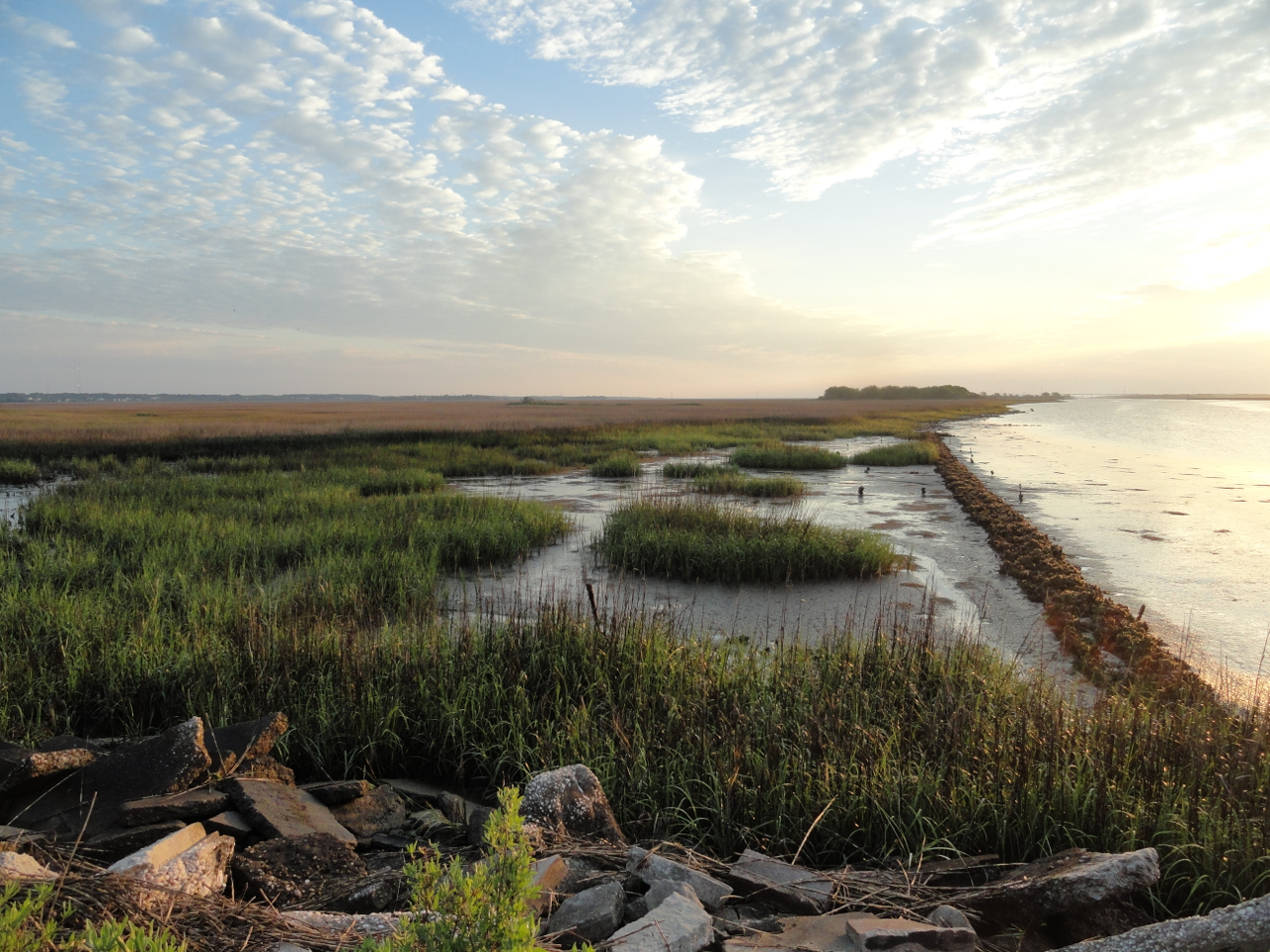
Natural & Nature-Based Solutions
(NNBS)
Photo Credit: The Nature Conservancy
Nature-based solutions incorporate both the natural environment and engineered systems that mimic or work in concert with natural systems to provide flood, fire, and drought risk reduction, as well as cleaner water and air.
Natural and nature-based solutions (NNBS) are a method to enhance ecosystem resilience in both natural and human-dominated systems. While these solutions are often considered for coastal problems such as sea level rise and flooding, riverine and urban systems can also benefit from this design. When implemented correctly, NNBS can provide habitat protection, prevent wildlife loss, create greener cities, and combat issues such as extreme weather, food production, and water resource management.
These solutions act to protect, sustainably manage, and restore ecosystems to promote biodiversity and human well-being. By working with existing natural systems and human-made infrastructure, NNBS can produce long-term social, economic, and environmental benefits.
NNBS include green and natural infrastructure and can be paired with grey infrastructure for a hybrid approach.
Design Credit: Climate Adaptation Partners
Examples of Natural & Nature-Based Solutions
A Closer Look: Flood Mitigation Strategies
In South Carolina, we are all too familiar with the issue of flooding, whether it’s a result of storm surge, king tides, or intense rainfall. NNBS are a useful approach to mitigate the effects of flooding while maintaining and restoring ecosystem services. The examples below are a few ways natural systems and infrastructure can work in tandem to address flooding issues in our communities.
Natural and Nature-Based Solutions to Reduce Flood Impacts
Flood mitigation can go beyond alleviating flood risk in an area. Effective design can also create ecological and community benefits. Considering ecological and community goals in tandem with flood reduction goals can ultimately create valuable spaces that can be enjoyed by the community while allowing nature to return to its desired state.
Design Credit: Robinson Design Engineers
Floodplain Preservation.
Reduce the risk of flooding, prevent or reduce risk to human life and property, and maintain the functions and values of floodplains, such as allowing for the storage and natural conveyance of water.
Stream Restoration.
A set of activities that help improve the environmental health of a river or stream. These activities aim to restore the natural state and functioning of the river system in support of biodiversity, recreation, flood management and landscape development.
Living Shorelines.
An erosion control strategy that incorporates native wetland vegetation either alone, or in combination with structural elements like natural fiber logs, bagged oyster shell, rock, or wooden sills parallel to shore to provide an initial wave break.
Road Retrofits.
Retrofitting roads and the water conveyance structures, such as culverts, ditches, and drains, that are undersized to adequately convey water in developed areas.
Culvert and bridge replacements in emergencies, rather than proactive measures, increases replacement cost by 4-140 times.
Wetland Restoration.
The manipulation of a former or degraded wetland's physical, chemical, or biological characteristics to return its natural structure and function. For example, restoring the bottom elevation in a wetland can reestablish the hydrological regime, natural disturbance cycles and nutrient fluxes.
Constructed Wetands.
An artificial wetland to treat municipal or industrial wastewater or stormwater runoff. It may also be designed for land reclamation after mining, or as a mitigation step for natural areas lost to land development.
Beneficial Use of Sediment.
Using sediment dredged from waterways in an environmentally beneficial way rather than confining in a disposal site. Examples include thin layer placement to enhance marsh growth or placement of sand to enhance important sand shoals or barrier islands.
Property Buyout & Restoration.
The acquisition of flood-prone properties using a combination of federal, state, or local funds. Once the property has been purchased, buildings are removed, and the land can be restored to a natural state with the potential for habitat restoration.
Low-Impact Development.
An integrated, comprehensive approach to land development or redevelopment that works with nature to manage stormwater as close to its source as possible. LID practices mimic the natural hydrologic regime through strategically integrated stormwater controls distributed throughout the landscape.
Flood Mitigation Strategies in Action in South Carolina
Stream preservation.
Photo Credit: Robinson Design Engineers
Living shoreline.
Photo Credit: The Nature Conservancy
Native plantings in low-lying areas.
Photo Credit: Robinson Design Engineers
Rain garden.
Photo Credit: Robinson Design Engineers
Similar Terms
There are a variety of terms floating around in conjunction with NNBS. Some of these terms include:
coastal natural infrastructure
green infrastructure
blue infrastructure
nature-based infrastructure
ecosystem-based disaster risk reduction
natural flood management
green shores
living shorelines
natural and nature-based features
While each term may portray a different aspect of NNBS, these terms all reference solutions that are connected to nature.
















